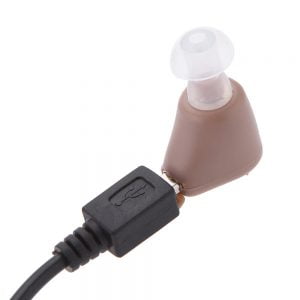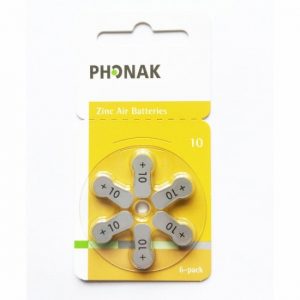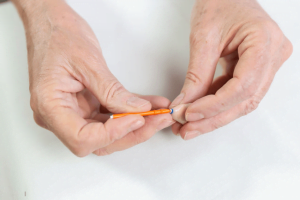Modern hearing aids are now becoming smaller and smaller with a much better and higher performance. For this, hearing aids need energy in the form of batteries to work without interruption.
Types of hearing aid batteries
There are two main types of hearing aid batteries, namely the rechargeable hearing aid battery and the standard disposable battery.
 Rechargeable Hearing aid Batteries
Rechargeable Hearing aid Batteries
The automation of rechargeable battery offers you an improved and more efficient power, smaller sizes, and environmental advantage.
When you visit a hearing aid centre in Malaysia, you will learn that many new hearing aids come with rechargeable batteries and these batteries are usually recharged at night when the user pulls out his/her hearing aids to sleep.
This rechargeable hearing aid gives the hearing aid user the flexibility to experience high-quality sound without the worry of carrying extra batteries. This rechargeable battery uses Li-ion batteries.
The Li-ion battery technology simply refers to the use of lithium ions which means that you can reuse the same battery by recharging the hearing aid with the required charger.
This rechargeable battery allows you to continue with your normal life with simple, safe and reliable charging.
 Standard Disposable Batteries
Standard Disposable Batteries
Zinc-air disposable batteries are the most commonly used batteries for hearing aids because of their high energy density. The zinc-air technology provides extremely high voltage stability.
The zinc-air disposable battery can also be called button batteries. They are air-activated. Immediately the factory seal is peeled from the back of the battery, oxygen interacts with the zinc in the battery and makes it active.
For better efficiency of a zinc-air battery, you should wait for one minute after removing the factory seal to fully activate the battery before placing it in the hearing aid.
Replacing the factory seal does not deactivate the battery. Once the factory seal is removed, the battery remains active until the charges are used up. Zinc-air batteries can last up to 3 years if stored at room temperature and dry environment. A little trick for battery life conservation is to open the hearing aid battery doors when you remove the hearing aid device at night.
Most hearing aid centres allow you to drop off used hearing aid batteries for recycling purposes and to help keep them out of the waste stream.
Sizes of Hearing aid Batteries
The disposable zinc-air batteries come in four standard sizes; 10, 13, 312 and 675, and they are also color-coded for easy identification of the correct size.
Size 10 hearing aid batteries
These size 10 batteries are basically used in completely in the canal (CIC) and mini receiver in the ear (RITE) hearing aid devices. Its color code is yellow and it is 5.8mm x 3.6mm in size. Its size makes it perfect for use in small hearing aid devices and it can last for 3 to 10 days.
Size 13 hearing aid batteries
The size 13 batteries are found in the ear (ITE) and behind the ear (BTE) hearing aid devices. Its dimension is 7.9mm x 5.4mm. Its color code is orange and can last for 6-14 days.
Size 312 hearing aid batteries
The size 312 hearing aid device batteries can be found in completely in the canal (CIC), mini receiver in the ear (RITE) and the behind the ear (BTE). It uses a brown color code and it can last for 3-10 days.
Size 675 hearing aid batteries
The size 675 batteries are reserved mostly for use in behind the ear (BTE) hearing aid devices. Its color code is blue. Its dimension is 11.6mm x 5.4mm and it tends to last longer than other batteries. It can last between 9-20 days.
 Maintenance of hearing aid batteries
Maintenance of hearing aid batteries
- Since hearing aid device batteries are air-activated, they should be left in their packaging until you need to use them.
- Hearing aid device batteries should be stored at room temperature and not in the refrigerator.
- The factory seal (color strip) should only be removed when you need to use them so as to protect the battery from oxidation.
- Do not put the factory seal (color strip) back on to avoid damaging the battery.
- At night, the hearing aid device should be turned off when not in use and the battery compartment should be left open. This will help conserve the battery’s power as the risk of condensation is reduced.
- Hearing aid device batteries should not be stored in the pocket.
Takeaway
Hearing aids are very important for people with hearing issues. Understanding your hearing aid batteries can help prolong your battery lifespan and keep your hearing aids in tip-top condition.
Do you have more questions regarding the maintenance of hearing aid batteries? Feel free to book a consultation session with our helpful specialists at https://perfecthearing.my/contact-us/


 Rechargeable Hearing aid Batteries
Rechargeable Hearing aid Batteries Standard Disposable Batteries
Standard Disposable Batteries Maintenance of hearing aid batteries
Maintenance of hearing aid batteries